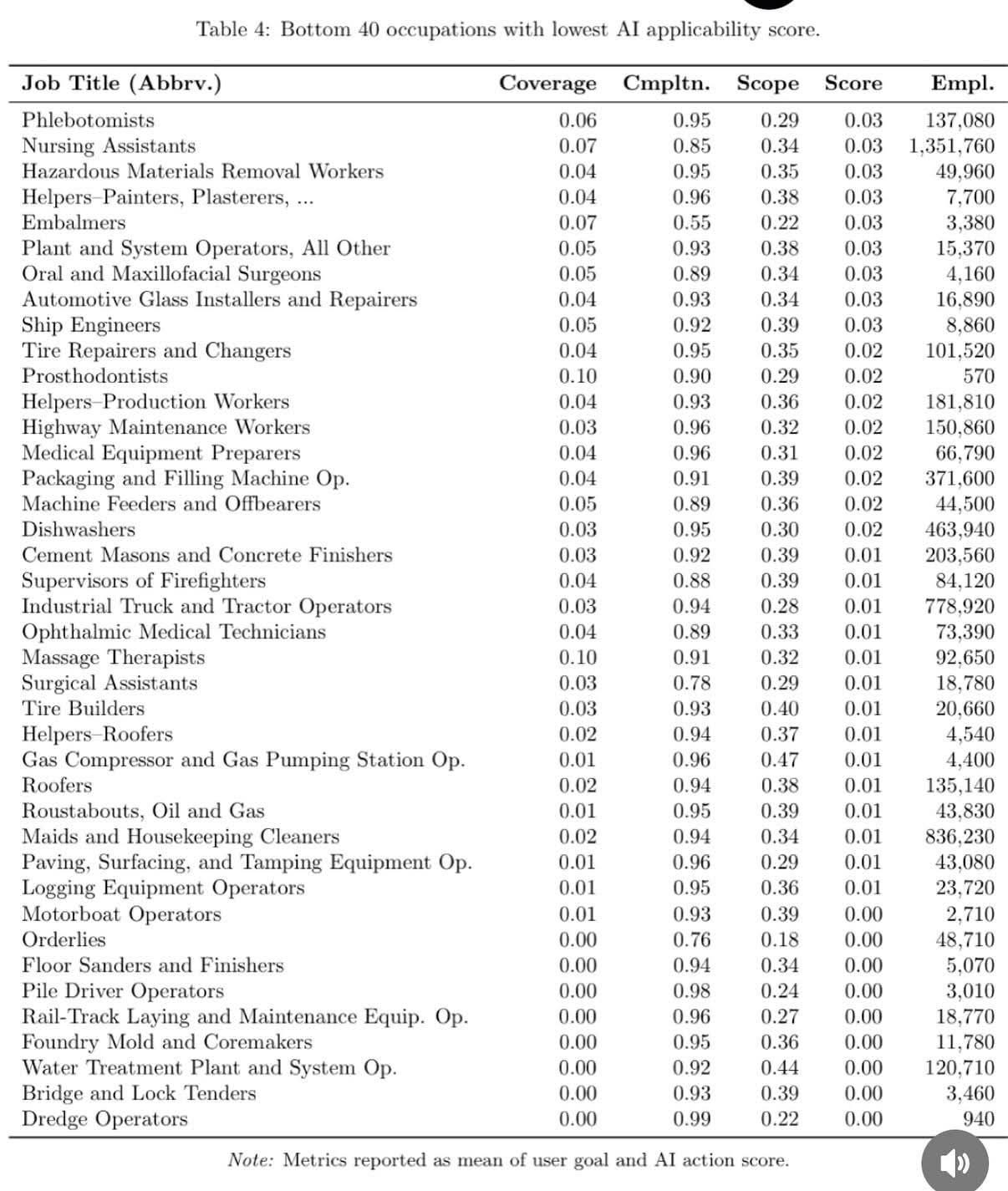
As a husband for over 25 years and a father of four energetic boys (ages 21-12), one of my deepest responsibilities is to prepare them to serve their future spouses/family with integrity and a spirit of service and to equip them to create experiences and opportunities for their kids; which entails choosing a career wisely at this juncture in their life.
While money isn’t everything, the ability to make memories and open doors often depends on careful career choices. With AI transforming the job market more rapidly than any change we’ve seen in the last 50 years, I keep my sons informed about the latest workforce research. Microsoft’s new Copilot study was trustworthy enough to share at the dinner table, and then I realized its insights were invaluable for any leader developing tomorrow’s talent as well.
Did You Know?
Microsoft’s latest Copilot usage study ranks 80 roles by how exposed or insulated they are from generative‑AI disruption. The professions most at risk are knowledge-work heavyweights such as interpreters, historians, and customer-service reps, while the least threatened include hands-on roles like phlebotomists, nursing assistants, hazardous-materials handlers and, yes, helpers for painters and embalmers.
The researchers analyzed 200,000 real Bing Copilot chats to score “AI applicability” across occupations, revealing that text‑centric, repetitive tasks are already feeling the automation squeeze. In contrast, tactile, situational, and emotionally anchored work remains comparatively AI‑proof.
So What?
- Differentiation Advantage: Low‑exposure jobs share a barrier: AI still can’t replicate tactile dexterity, empathy, or context‑rich judgment. Organizations that embed such “human moats” can defend margins even as algorithmic competition rises
- Flow & Lean Economics: Queuing theory punishes over‑burdened systems. By redirecting routine, high-variability knowledge work to AI, leaders free scarce human capacity for high-contact, low-automation tasks—shrinking queues and cycle times where AI brings little value.
- Change Leadership Reality Check: Employees in “AI‑safe” roles may wrongly assume immunity; paradoxically, urgency is still critical. Urgent adaptation means upskilling in data literacy, human‑machine collaboration, and service design.
Now What?
| Stage | Tactical Move | Outcome |
|---|---|---|
| Urgency | Host “AI Impact Surgeries” where frontline staff map tasks against Microsoft’s applicability scale. | Shared vision, reduced rumor‑mill noise |
| Strategy | Segment roles into Automate, Augment, Human‑Only swim‑lanes aligned with cost/differentiation outlooks. | Clear investment thesis |
| Execution | Deploy small‑batch, 8‑week pilots combining AI copilots + human experts; measure queue‑time and error‑rate deltas. | Early wins & reinvestment capital |
| Culture | Bake “human excellence” KPIs, dexterity, empathy, creative judgment, into OKRs to reward uniquely human value. | Behavioral reinforcement |
| Scale | Stand up an “AI Governance Circle” (think Superminds) to iterate ethical, legal, and workforce policies monthly. | Institutionalized learning |
Catalyst Leadership Questions
| Leadership Question | Probing Prompt |
|---|---|
| Where does our value chain still demand uniquely human judgment—and how are we celebrating it? | “Share a recent customer story that no algorithm could have solved.” |
| Which high‑volume tasks can Copilot shoulder next quarter to release 15 % capacity for human‑only services? | “What queuing hotspots vanish if we automate this form or that call?” |
| How might we price or package ‘human‑moat’ offerings to deter low‑cost, AI‑driven entrants? | “Which features command a premium precisely because they’re not automated?” |
| What barriers exist for roles deemed ‘safe’ and how will we build Desire, Knowledge, and Ability anyway? | “Who’s quietly resistant because they feel untouchable?” |
| Are our hiring pipelines optimized for dexterity, empathy, and contextual creativity? | “How do our interview scorecards weight those traits vs. technical prowess?” |
Top 40 Jobs (that may not be replaced easily)
As we discussed in our family; trying to shape potential careers that align with interest, here is a great list that can guide that conversation. Obviously this list can change as quickly as I am typing this; but good discussions and good habits to get into (evaluating this frequently).
